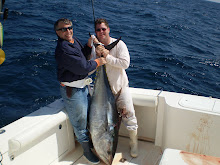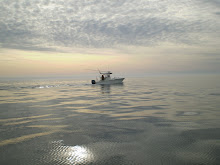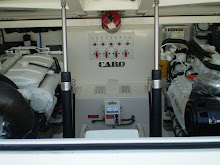I pulled this stunning sea surface temperature (SST) chart from an internet site of Atlantic Ocean currents. It highlights the warm Gulf Stream in blood red, flowing Northeast tight alongside the North Carolina coast and curling, serpent-like, into the central North Atlantic. It's a fascinating graphic, bringing to the fore the power and majesty of this deep blue highway carrying neutrients and pelagic fish across our part of the globe. It also makes obvious why Hatteras Island is the mecca of sportfishing on the Eastern seaboard--the warm waters and trophy fish located just a brief transit from shore. Alternatively, more Northern states--Virginia, Maryland, Delaware, New Jersey--are set back a ways from this beautiful water and its bounty, making deep sea fishing all that more difficult.

The scientific langauge accompanying the chart is reproduced below:
I. SST Images
Data used to construct these images is measured from a satellite instrument known as a radiometer. The instrument measures the amount of radiation emitted from the surface of the ocean which is directly related to the surface temperature. Each temperature is then assigned a different color and an image of SST is produced.
The data used to construct the image was obtained with an AVHRR (Advanced Very High Resolution Radiometer) sensor carried on a NOAA satellite. On this image, and all SST images in the Gulf Stream Tutorial, purple and blue represent the coldest temperatures (between 0-15 °C) and orange and red represent the warmest temperatures (between 22-32 °C). The Gulf Stream is easily visible on these images as the warmest water on the image.









No comments:
Post a Comment